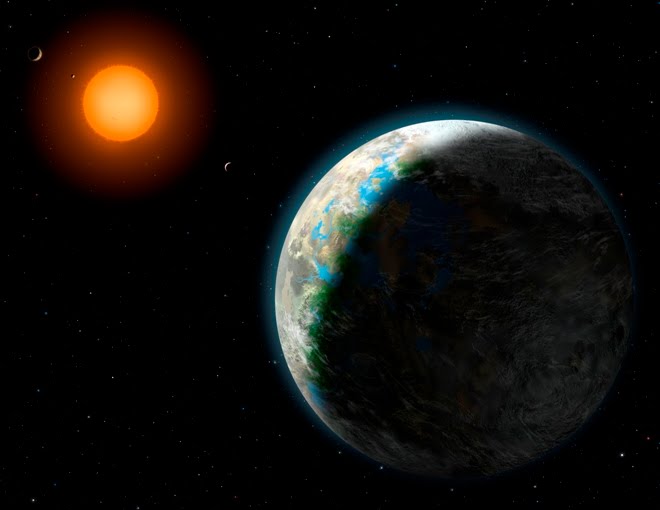BEIJING — China will launch an unmanned spacecraft early next month that will attempt to dock with an experimental module, the latest step in what will be a decade-long effort to place a manned permanent space station in orbit.
In space, the Shenzhou 8 will carry out maneuvers to couple with the Tiangong 1 module now in orbit.
The ship and the modified Long March-2F rocket that will sling it into space were transferred early Wednesday to the launch pad at the Jiuquan space base on the edge of the Gobi desert in northern China, the official Xinhua News Agency said.
Its exclusive report did not specify a date for the launch. Chinese space officials rarely speak to foreign media.
The 8.5-ton, box car-sized Tiangong 1 launched last month has moved into orbit 217 miles (350 kilometers) above the Earth and is surveying Chinese farmland using special cameras, Xinhua said.
It is also conducting experiments involving growing crystals in zero gravity, the report said, citing the launch center's chief engineer, Lu Jinrong.
Following Shenzhou 8, two more missions, at least one of them manned, are to meet up with the module next year for further practice, with astronauts staying for up to one month.
Exploratory missions pave way for future China Space Station
Plans call for launching two other experimental modules for more tests before the actual station is launched in three sections between 2020 and 2022.
At about 60 tons when completed, the Chinese station will be considerably smaller than the International Space Station, which is expected to continue operating through 2028.
China launched its own space station program after being rebuffed in its attempts to join the 16-nation ISS, largely on objections from the U.S. It is wary of the Chinese program's military links and the sharing of technology with its chief economic and political competitor.
Astronomy blog with news on Gliese 581g, Exoplanets, 2012 Transit of Venus, Zarmina's World, exoplanetary exploration, Extreme Supermoons, Kepler telescope, 2012 astronomy, Maya prophecies, links to astronomy websites, 2012 Transit of Venus, 21st century architecture, astronomers, solar energy, astronomical news.
Is There LIFE on Planet GJ581g?
GJ 581 g is an Earth-like planet recently discovered orbiting Gliese 581, a red dwarf star categorized as M Dwarf. This new discovery is perceived by scientists as as a Goldilocks type sphere - not too hot, not too cold. Nicknamed Zarminas World (after his wife Zarmina) by project leader Steven S Vogt, GJ581g will fascinate and enthrall Earthlings for generations to come.
GJ581G Orbiting Gliese 581

Earth Has A Twin
Solar Powered System

Astronomy News Info Photos Telescopes
Chitika Network Links
Astronomy For Everyone
Green Mutual Fund Investing Info
Popular Posts
-
BEIJING -- China plans to launch space labs and manned ships and prepare to build space stations over the next five years, according to a pl...
-
To me it seems likely that the Transit of Venus in 2012 is the most obvious reason the Mayan priests would define 2012 as the end of one er...
-
Meteor shower to be obscured by daylight, full moon CAPE CANAVERAL, Fla. -- Heads-up, meteor fans. As many as 750 meteors an hour are expect...
-
Here are some of the most recent Mars images released by NASA, taken from the Curiosity rover in recent days: Check b...
-
Sustainable Tourism: A Key to Global Solutions by Dr. Reese Halter and Dr. Dave Randle When most people think of tourism, they probably don...
astronomycentral.co.uk
Best Green Stocks Investing Blog
NASA Watch
Wednesday, October 26, 2011
Thursday, October 6, 2011
Sat Oct 8th: Draconid meteors from Comet Giacobini-Zinner

Meteor shower to be obscured by daylight, full moon
CAPE CANAVERAL, Fla. -- Heads-up, meteor fans.
As many as 750 meteors an hour are expected Saturday, as Earth travels through streams of dust and ice from Comet Giacobini-Zinner. The comet passes through the inner solar system every seven years.
But the timing for viewing them in the United States is terrible. These Draconid meteors are expected to peak between 3 and 5 p.m. EDT, so the sun will obscure everything.
NASA space weatherman Bill Cooke suggests popping outside and taking a look once it's dark. You might get lucky if forecasters' timing is off.
And while the meteors will be falling during nighttime in Europe, Africa and the Middle East, a nearly full moon is expected to dull the spectacle there.
"The moon sucks. It's messed up meteor showers this year. Next year will be better," said Cooke, team leader of NASA's Meteoroid Environment Office at Marshall Space Flight Center in Huntsville, Ala.
It just so happens that this year's meteor showers are falling at or near the time of full moons.
Because the Draconids move relatively slowly – 12 miles per second – they're faint and the moonlight "really tends to wash them out," Cooke said in a phone interview.
The Draconids get their name from the constellation Draco, the Dragon.
In 1933 and 1946, the Draconid outbursts were major – observers reported an astounding rate of 20,000 shooting stars an hour. An Irish astronomer described the 1933 episode like a flurry of snowflakes.
The next Draconid outburst after this one will be in 2018.
If you miss this weekend's Draconids, you can catch the Orionids on Oct. 22 – remnants from Halley's Comet, expected to number 20 meteors an hour.
Then there are the Leonids in mid-November – with as many as 100 meteors an hour.
"Unfortunately, the moon will interfere with them as well," Cooke said. "We just don't have any good luck, moonwise, this year."
Subscribe to:
Comments (Atom)
GJ581g Zarminas World Info and Links
Search Green Stocks Investing Network

Custom Search


